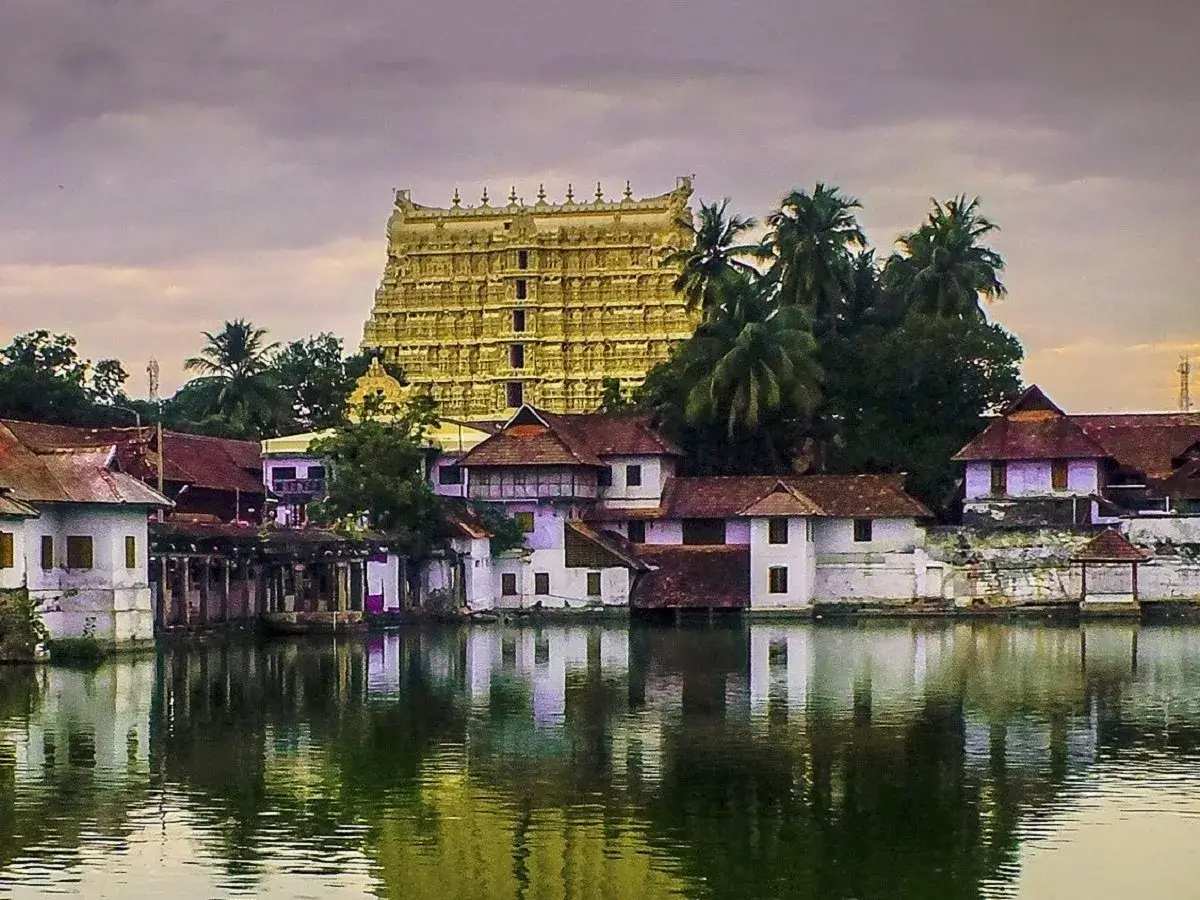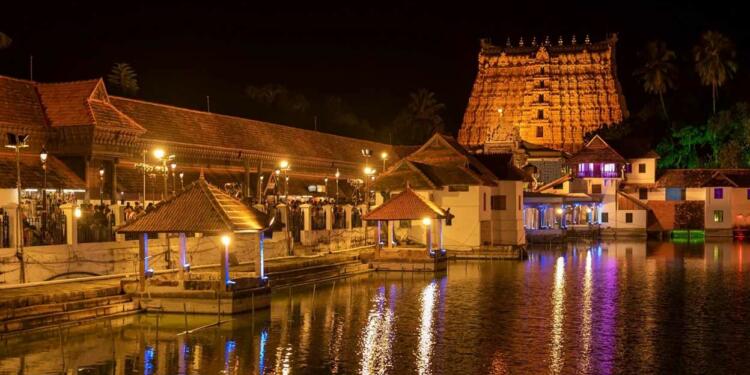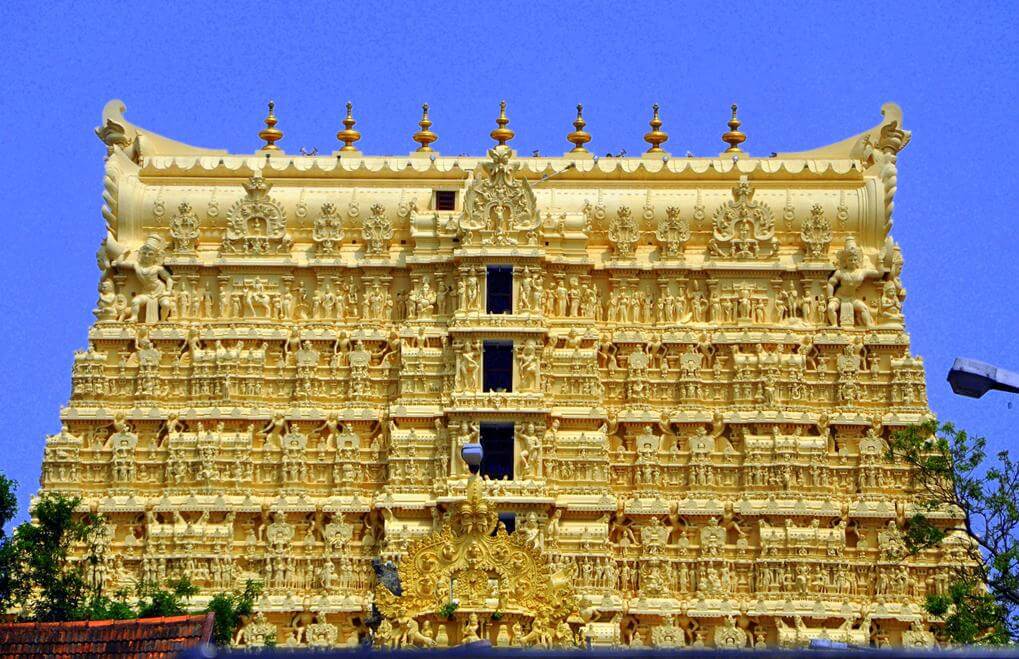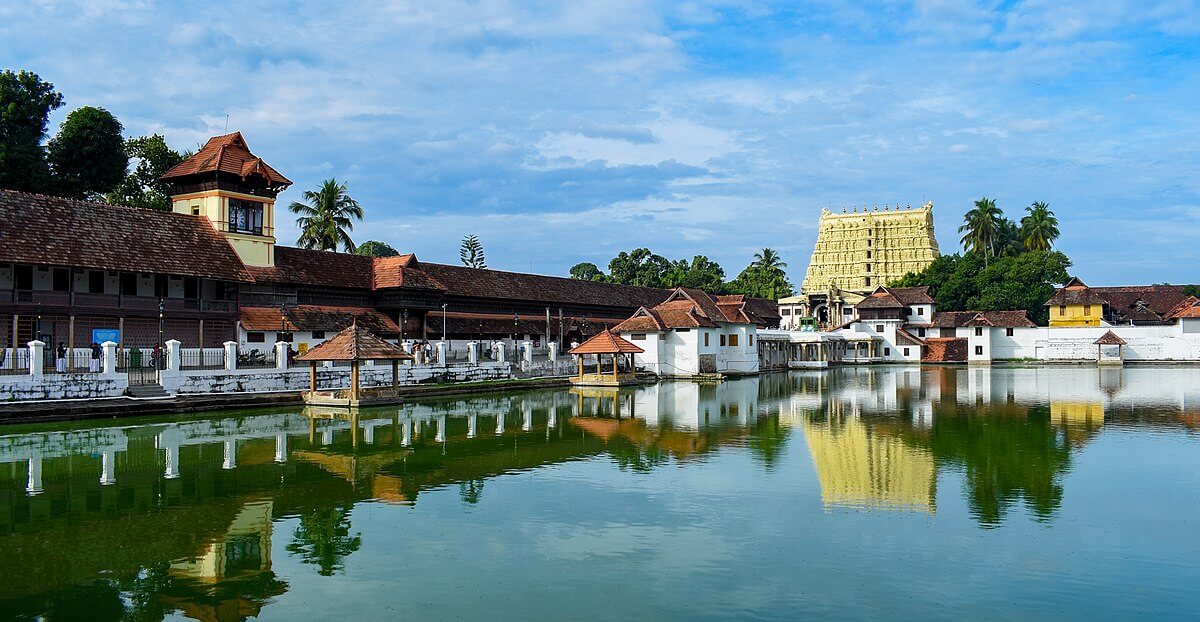Padmanabhaswamy Temple Kerala – Overview
Padmanabhaswamy Temple is one of the most important temples dedicated to Lord Vishnu in Thiruvananthapuram, Kerala. This temple is one of the few dedicated to the Lord in which he is worshiped in the “Ananta Shayanam” position. The temple has been declared as the richest Hindu temple in the world and the richest religious institution in the world.
Padmanabhaswamy Temple Timings
Padmanabhaswamy Temple opens at 3:30 am and closes at 7:20 pm.
| Day | Timing |
|---|---|
| Monday | 3:15 am – 12:00 pm 5:00 pm – 7:20 pm |
| Tuesday | 3:15 am – 12:00 pm 5:00 pm – 7:20 pm |
| Wedesday | 3:15 am – 12:00 pm 5:00 pm – 7:20 pm |
| Thursday | 3:15 am – 12:00 pm 5:00 pm – 7:20 pm |
| Friday | 3:15 am – 12:00 pm 5:00 pm – 7:20 pm |
| Saturday | 3:15 am – 12:00 pm 5:00 pm – 7:20 pm |
| Sunday | 3:15 am – 12:00 pm 5:00 pm – 7:20 pm |
Also Read: Khade Ganesh Ji Mandir Kota, Timings, History, Travel Guide, and How to reach
History of this Temple
As per history, the exact date or year of construction of the temple is unknown. However, the temple as well as the city is mentioned in the Sangam literature also known as Tamil literature as early as 500 BCE and the Golden Temple in 300 CE. Many scholars believe that the entire city surrounding the temple was extremely rich and was covered with gold. Scholars believe that this temple has been a place of worship since the beginning of Kali Yuga. Many inscriptions written on palm leaves have been handed down through many.
The architecture of the Padmanabhaswamy temple is a mixture of the Kerala style and the Dravidian style of architecture. The temple architecturally resembles the Adikesava Perumal Temple at Kanyakumari in Tamil Nadu.
The gopuram dates to the 16th century. The idol of the deity in the main sanctum is mesmerizing and a treat for any devout Hindu. The Lord can be seen lying on Sheshnag with His hand on the Shiva Lingam. Several features of the temple architecture are worth noting. The temple has nine entrances which represent the nine orifices of the human body.
Also Read: Bijasan Mata Mandir Bundi, Timings, Travel Guide, History and How to reach
Place to visit near this Temple
Attukal Temple
Attukal Bhagavathi Temple is situated just 2 km away from Padmanabhaswamy Temple. This temple is dedicated to Goddess Kannagi, who is believed to be a form of Goddess Parvathi. The famous Attukal Pongal festival is celebrated every year in the temple in the month of February-March. The festival holds the Guinness World Record for the achievement of the largest gathering of women for a single religious activity.
Amunthirathu Devi Temple
This temple is dedicated to Goddess Amunthirathamma, who is believed to be an incarnation of Goddess Bhadrakali. The unique feature of the idol is that it is made of Krishna rock and represents an Ardha Padmasana posture. The length of the idol is 48 angulas which is 1.76 cm. 4 represents the four sacred Vedas. The number 8 represents the prosperity called Ashteshwaram. These are Dhanya, Dhan, Aadhi, Veera, Vijaya, Sandhana, Gaj and Bhagya.

Also Read: Dharmapuri Temple, Telangana: Timings, History, Travel Guide and How to reach
How to reach Padmanabhaswamy Temple
By Air- The nearest airport from this temple is Thiruvananthapuram airport. And the city of Thiruvananthapuram or Trivandrum is well connected to cities like New Delhi, Mumbai, Chennai, Bengaluru and Cochin. From here you can easily reach this temple by using local transport services.
By Train- The nearest railway station from this temple is Thiruvananthapuram railway station. This is well connected to major cities of India such as Delhi, Mumbai, Hyderabad, Chennai, Bengaluru, Ernakulam, Jammu, Guwahati, and Coimbatore. From here you can easily reach this temple by using local transport services.
By Road- The Kerala State Road Transport Corporation operates regular buses to Thiruvananthapuram from several neighbouring cities and towns within Kerala as well as from other states such as Tamil Nadu and Karnataka.
Subscribe our TFI Dharma YouTube channel to watch Devotional videos because we are here to serve Sanatana Dhrama: TFIDHARMA


































